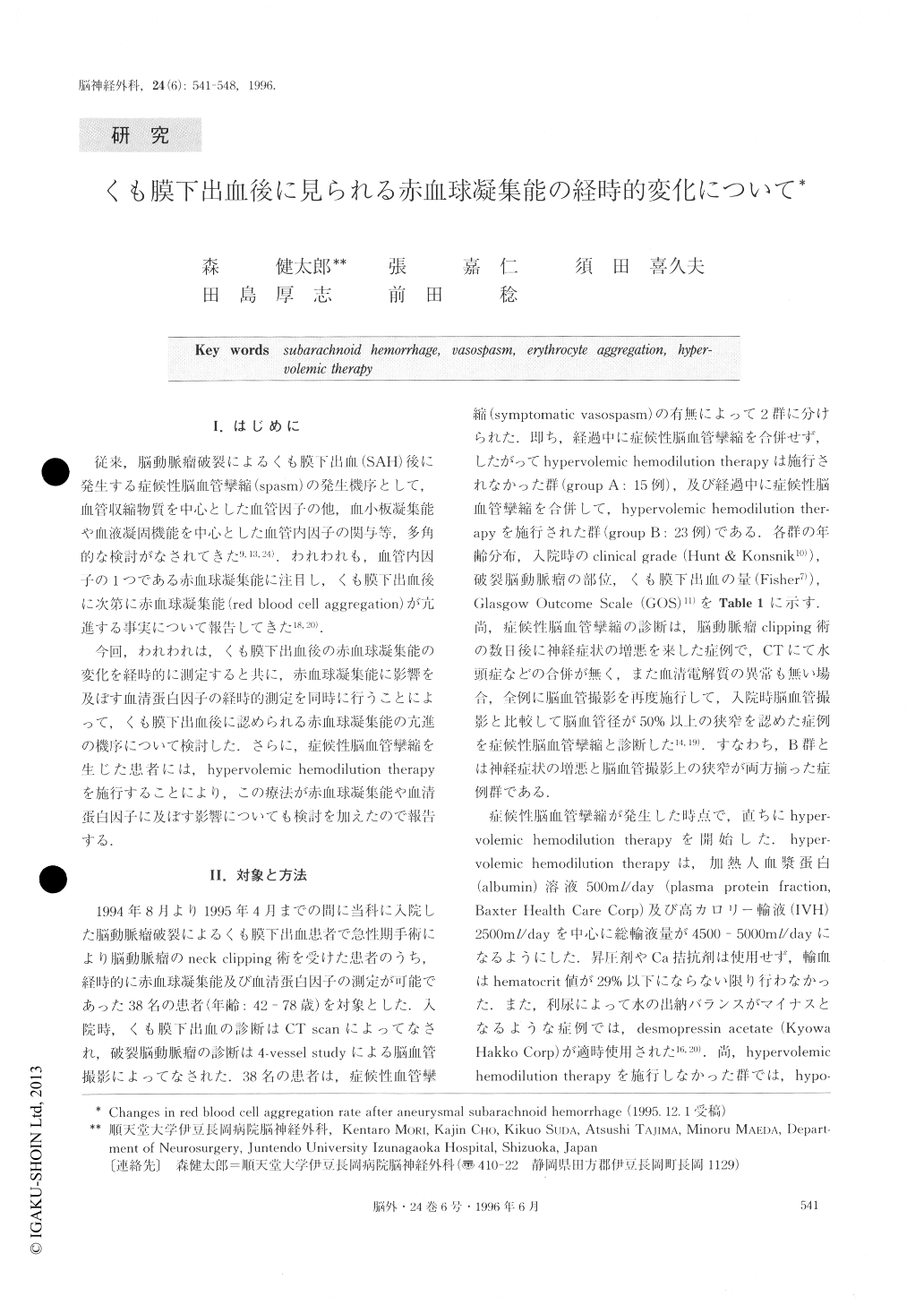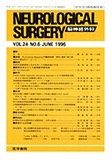Japanese
English
- 有料閲覧
- Abstract 文献概要
- 1ページ目 Look Inside
I.はじめに
従来,脳動脈瘤破裂によるくも膜下出血(SAH)後に発生する症候性脳血管攣縮(spasm)の発生機序として,血管収縮物質を中心とした血管因子の他,血小板凝集能や血液凝固機能を中心とした血管内因子の関与等,多角的な検討がなされてきた9,13,24).われわれも,血管内因子の1つである赤血球凝集能に注目し,くも膜下出血後に次第に赤血球凝集能(red blood cell aggregation)が亢進する事実について報告してきた18,20).
今回,われわれは,くも膜下出血後の赤血球凝集能の変化を経時的に測定すると共に,赤血球凝集能に影響を及ぼす血清蛋白因子の経時的測定を同時に行うことによって,くも膜下出血後に認められる赤血球凝集能の亢進の機序について検討した.さらに,症候性脳血管攣縮を生じた患者には,hypervolemic hemodilution therapyを施行することにより,この療法が赤血球凝集能や血清蛋白因子に及ぼす影響についても検討を加えたので報告する.
Red blood cell (RBC) aggregability is one of the im-portant factors determining blood viscosity in the mi-crocirculation. The RBC aggregation rate was moni-tored in 38 patients who underwent early aneurysmal clipping surgery after subarachnoid hemorrhage (SAH). The intravascular factors (hematocrit, serum albumin, a2-macroglobulin, fibrinogen, IgG) that influ-ence RBC aggregation were also examined. The RBCaggregation rate increased on days 5-7 but decreased significantly as a result of hypervolemic hemodilution therapy (H-H therapy). The hematocrit level was also reduced by H-H therapy. The serum albumin concen-tration decreased and the serum a2-macroglobulin con-centration increased significantly on days 5-7. After H-H therapy, the serum albumin concentration in-creased and the serum a2-macroglobulin concentration decreased significantly. Serum IgG and plasma fibri-nogen concentrations did not change significantly. It is known that albumin decreases and a2- macroglobulin increases RBC aggregability. It has be-come apparent that serum albumin and a2- macroglobulin play important roles in the determination of RBC aggregability after SAH. We conclude that the improvement in RBC aggregability induced by H-H therapy is effective for reversing progressive neuro-logical deterioration due to cerebral vasospasm.

Copyright © 1996, Igaku-Shoin Ltd. All rights reserved.


